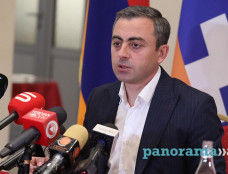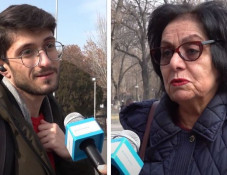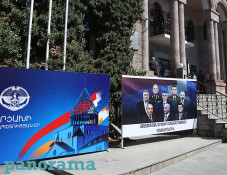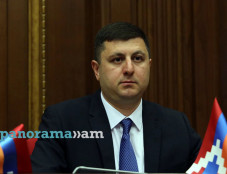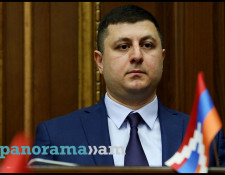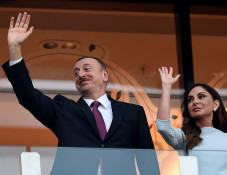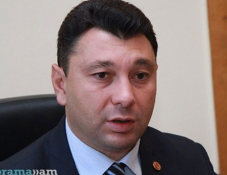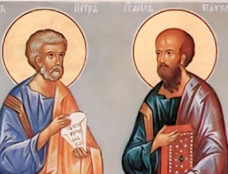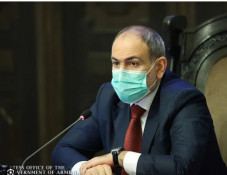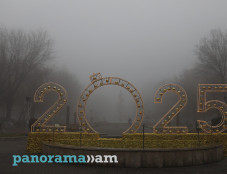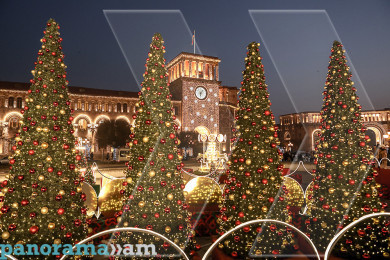
German Orientalist: Armenia is a magic country and needs to be well taken care of
Heiko Conrad works as a teacher of religion in public schools in Brandenburg (Berlin), Germany. He has been specializing in Armenian studies (history and religion) for many years. In the interview to Scholarm.com he speaks about his interest in the works of Armenian historian Kirakos Gandzaketsi, as well as about some issues in Armenia such as environment and the architecture of Yerevan.
- Mr. Conrad, you have been studying Armenian history for many years by now. How did you first hear about Armenia and embark on Armenian studies?
- My first encounter with Armenia was at school. I remember that when I was in the second or third class, I and my classmates received a collection withpostcards from the republics of the Soviet Union as a present. I got the collection of Armenia/Yerevan... On the television I remember some pictures of documentation about the Genocide, also my father told me about it. Later I noticed Armenia on the maps of the Roman Empire which fascinated me. When I was 16 I met a Professor for Oriental studies who suggested that I should learn Armenian. So after I finished my studies in theology I pursued Oriental studies with the main focus on the Armenian language and culture. At that time I also got the first introduction in the Armenian historiography – among others Kirakos Gandzaketsi, whose writings I have been studying ever since.
- What interests you most about Kirakos Gandzaketsi as a historian?
- Kirakos is an important medieval historian and churchman for Armenia (13th century) as well as for the surrounding countries. He tells events, stories and legends concerning Armenia, Georgia, the Romans, Byzantines, Khazars, Persians, Arabs, Seljuks and of course the Mongols. The Mongol period is the subject of the second part of his history. Meanwhile in the first part he is summarizing the epochs from the Christianization and Gregory the Illuminator until the Cilician era, telling about Nerses Shnorhali and the church situation. The second part, starting with the reign of Levon I. in Cilicia, describes the period before and during his lifetime in the 13th century – he is an important source for this historical period, and he is an eyewitness and ear witness for many events he writes about. So, his history book and also other sources explaining it give you a rather wide overview of a good part of the Armenian medieval history – and history in general. It is also very interesting that you get the idea of the mentality of a medieval person who was a monk. Very often he makes no difference between history and mythology – historical events, legends and miracles are abundant, and wonders are an integral part of the reality in his time. It is interesting to observe that whenever Kirakos talks about saints he shows that they perform miracles (miracles were an integral part of their life and ministry), as opposed to the heretics, whose 'miracles' were but falsehood. Kirakos is a patriot and his point of view is always Armenian with a certain supplement: in a full chapter he narrates Albanian (Aghuank) history. So he feels probably at the same time both Armenian and Albanian, and he mentions in a certain passage that he is from the country of Gandzak. A few times he narrates events from this city and its destruction by the Mongols. He is also deeply anti-Muslim. In general, it is hardly possible to understand the modern Armenian history – including the events of the Genocide – without an idea of the older history.
- How would you describe Armenia after having lived here for a while?
- Armenia is a magic country, and at the same time it is a land of transition. It is seismic in terms of both geography and the political situation. Wonderful is the friendliness and hospitality of the people, especially in the countryside. Armenia has very good food, especially, when it is homemade; I love Armenian Matzun! Swimming in Lake Sevan, seeing its colours, feeling the atmosphere of the mountains and seeing Ararat on a clear day – all this makes me feel happy. It is more difficult in Yerevan. It has alot of high buildings which were never supposed to be built in the centre – they are disturbing the whole architecture of the city. It is a tragedy that the older houses in the historical centre are meanwhile being mostly destroyed... buildings like in Dubai are not supposed to be built in the historical centre...
Very dramatic is obviously the selling of huge natural areas to the mining industry of other countries. But also disturbing is for me, that the consciousness of the common people for the environment is still on a low level. Yerevan could rebuild a world wonder in the city. Only still nobody knows about it. Armenia is a magic country, and it needs to be well taken care of.
- What do you mean by rebuilding a 'world wonder'?
- Well, I have this idea that in the right and left side of the Cascade gardens could be planted, which would include the whole and still free lateral area - it could become the ‘Hanging Gardens’. Because Armenia is the country where from ancient times culture and history have been entertwined, it would be great to recreate the idea of the Hanging Gardens here – for that there is no better place than the Cascade in Yerevan.
Heiko Conrad has lived in Armenia for a while; he often visits Matenadaran (Institute of Ancient Manuscripts) to study the Armenian history. He speaks fluent Armenian.
Newsfeed
Videos






